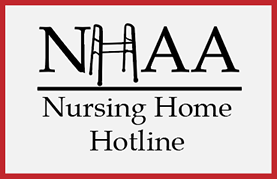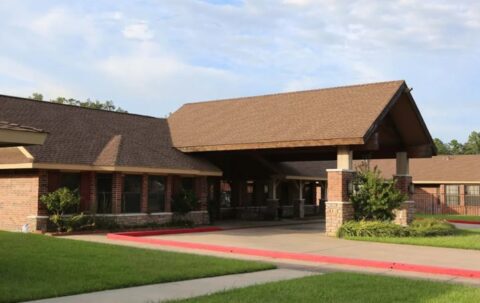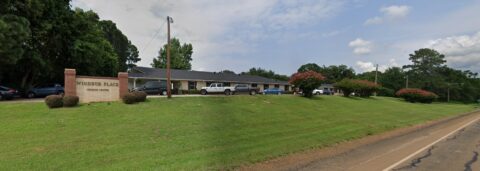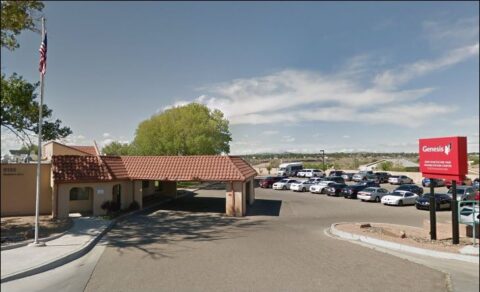State Findings:
Provide appropriate pressure ulcer care and prevent new ulcers from developing.
**NOTE- TERMS IN BRACKETS HAVE BEEN EDITED TO PROTECT CONFIDENTIALITY** 43994
Based on observations, interviews, and record review, the facility failed to ensure the necessary
treatment and services, in accordance with comprehensive assessment and professional standards of practice, to prevent development of pressure injuries was provided for 2 of 6 Residents (Resident
#1 and Resident #2) reviewed for pressure injuries.
The facility failed to prevent Resident #1 from developing a wound to his sacrum that changed from
excoriation to a stage 4 pressure ulcer on 10/24/2024. Resident #1 admitted to the hospital on 10/31/2024 with sepsis (infection in the blood) and osteomyelitis (infection in the bone).
The facility failed to prevent Resident #2 from developing a wound to his sacrum that changed from excoriation to an unstageable wound on 11/10/2024.
The facility failed to follow their skin and wound policy by not notifying the Medical Director of the changes to Resident #1 and #2’s wounds.
The facility failed to accurately assess Resident #1 and #2’s pressure sores.
An Immediate Jeopardy was identified on 11/10/2024 at 11:15 AM. While the Immediate Jeopardy was removed on 11/11/2024 at 2:15 PM, the facility remained out of compliance at a scope of a pattern and a severity level of no actual harm with potential for more than minimal harm that is not
Immediate Jeopardy due to the facility’s need to monitor and evaluate the effectiveness of the plan of removal and corrective actions.
These failures could place residents at risk for new development or worsening of existing pressure
injuries, pain, and decreased quality of life.
Findings included:
1.Record review of an Admission Record dated 11/9/2024 for Resident #1 indicated he admitted to the facility on [DATE] and was [AGE] years old with diagnosis of Alzheimer’s disease, heart failure
(heart’s inability to pump blood effectively) and benign prostatic hyperplasia (enlarged prostate).
Record review of an Admission MDS assessment dated [DATE] for Resident #1 indicated he had moderate impairment in thinking with a BIMS score of 6. He required supervision or touching assistance with toileting hygiene and personal hygiene. He was always continent of urine and bowel. He was not at risk of developing pressure ulcers/injuries and did not have any unhealed pressure ulcers/injuries.
Record review of a Quarterly MDS assessment dated [DATE] for Resident #1 indicated he has severe impairment in thinking with a BIMS score of 1. He was dependent on staff for all ADLs except for upper body dressing which he required substantial/maximal assistance. He was always incontinent of urine and bowel. He was at risk of developing pressure ulcers/injuries. He did not have any unhealed pressure ulcers/injuries. Other ulcers, wound and skin problems indicated he had moisture associated skin damage (incontinence-associated dermatitis, perspiration, drainage). Treatments included applications of ointments/medications.
Record review of a care plan for Resident #1 dated 10/18/2024 indicated he had impairment to skin
related to stage 2 updated 10/29/24 now a stage 3. Interventions included air mattress, clean sacrum with normal saline, pat dry and apply calcium alginate to wound bed, cover with dry dressing daily. Multivitamins with minerals, zinc sulfate and vitamin c to be given daily for wound healing.
Record review of a care plan for Resident #1 dated 10/18/2024 indicated he had impairment to skin
related to stage 2 to right ischial tuberosity. Interventions included air mattress, cleanse left
ischial tuberosity (bone that makes up the bottom of the pelvis) with normal saline, pat dry and
apply exuderm (thin protective dressing to provide a protective barrier for wounds) q 3 days.
Multivitamins with minerals, zinc sulfate and vitamin c to be given daily for wound healing.
Record review of a care plan for Resident #1 dated 2/28/2024 indicated he had pressure ulcer or
potential for pressure ulcer development related to impaired mobility with interventions to notify
nurse immediately of any new areas of skin breakdown.
Record review of skin evaluations for Resident #1 dated 9/12/2024 to 10/17/2024 by the Treatment
Nurse indicated he had excoriation to bilateral buttock and no other skin issues noted.
Record review of a Skin/Wound Note for Resident #1 dated 10/18/2024 by the Treatment Nurse
indicated, Excoriation to sacrum had deteriorated and presented as a stage 2 (top layer of skin is
broken) measures 3.0 x 4.0 x 0.2 with serous (bloody) exudate (drainage) small amount no odor wound bed pink and stage 2 to left ischial tuberosity measures 2.7 x 3.0 with serous exudate small amount no odor wound bed pink peri wound pink excoriated (redness). C/o pain during treatment. Pain meds given. NP notified. New order: cleanse left ischial tuberosity ulcer with normal saline, pat dry, apply exuderm q3 days. Exuderm to left ischial. RP notified.
Record review of a skin evaluation for Resident #1 dated 10/24/2024 by the Treatment Nurse
indicated, . excoriation to sacral region (bottom of spine) and bilateral buttock, stage 3 (loss of
tissue) to sacrum 3.8 x 4. 4, stage 3 to left ischial tuberosity 3.0 x 3.0 x 0.2 .
Record review of a Skin/Wound Note for Resident #1 dated 10/24/2024 by the Treatment Nurse
indicated, sacrum has deteriorated now presents as a stage 3 measures 3.8 x 4.4 x 0.2 with serous
exudate small amount no odor wound bed 50% non-granulated (tissues 50% yellow slough peri wound pink and stage 3 to left ischial tuberosity measures 3.0 x 3.0 with serous exudate small amount no odor wound bed 70% granulated tissues 30% yellow slough peri wound pink excoriated. C/o pain during treatment. No new orders at this time. NP notified. RP notified .
Record review of a Nurse Progress Note for Resident #1 dated 10/31/2024 indicated, .patient out of
the facility, went to appointment with Infectious Disease Specialist on this AM and transportation
received notice per RP that patient was being admitted to the hospital .
Record review of an History and Physical for Resident #1 dated 10/31/2024 from hospital indicated
Resident #1 was sent to the hospital from Infectious Disease Specialist office for infection sacral
decubitus ulcer. Assessment and plan of treatment revealed infection with some necrosis decubitus ulcer sacral .
Record review of a Pathology Report dated 10/31/2024 for Resident #1 indicated a bone biopsy of the coccyx had acute osteomyelitis (infection in the bone).
Record review of a Consultation Note for Resident #1 dated 11/1/2024 from hospital indicated he had been admitted to the hospital on account of worsening changes involving his sacrococcygeal wound (a pressure injury also known as a bedsore that occurs in the sacrum) with features suggestive of an infected stage IV (full thickness tissue loss with exposed bone, tendon, or muscle) sacrococcygeal decubitus ulcer (bedsore).
Record review of a Clinical Documentation Form for Resident #1 dated 11/8/2024 indicated sepsis
(blood infection all over the body) was present on admission.
During a phone interview on 11/8/2024 at 4:55 PM, RP for Resident #1 said he was at the hospital.
She said he was admitted to the hospital on 10/31/2024 from an appointment with an infectious
disease physician. She said the facility had been checking labs for him and he had elevated WBC’s and the facility Medical Director was giving orders. She said on 8/31/2024 he was admitted to the hospital with altered mental status, and it was documented the beginning of a wound. He discharged from the hospital 9/6/2024 back to the nursing home. She said he was on antibiotics, and they sent him to see a blood physician and was told by her she could not see find anything and was told he needed to see an infectious disease doctor. She said he saw the infectious disease doctor on 10/31/2024 and he immediately saw an area on Resident #1’s bottom and sent him to the hospital and said that was the source of his infection. She said there was a huge hole that you could place your fist in, and she did not see it until Resident #1 was at the hospital. She said she was told by the nursing facility that they were using some type of saline spray in the wound. She said she visited her father daily and the last time she saw the wound before the last hospital stay it looked like raw meat. She said it was not open at that time, but it looked bad. She said he had one debridement (surgical removal of damaged tissue) of the wound since admission to the hospital and he had a colostomy (a surgical opening in the large intestine for stool which collects into a bag outside of the body) to keep feces from getting into the wound. She said they were planning on another debridement sometime next week.
2. Record review of an Admission Record for Resident #2 dated 11/9/2024 indicated he admitted to
the facility on [DATE] and was [AGE] years old with diagnoses of dementia, malignant neoplasm of
prostate (cancer of the prostate) and atherosclerosis (buildup of plaque in the artery walls that
can block blood flow).
Record review of a Quarterly MDS Assessment for Resident #2 dated 9/30/2024 indicated he had severe impairment in thinking with a BIMS score of 1. He was dependent on staff with all ADL’s except for eating which he required supervision or touching assistance. He was always incontinent of urine and bowel. He was at risk of developing pressure ulcers/injuries but did not have any unhealed pressure ulcers/injuries. Other ulcers, wounds and skin problems indicated moisture associated skin damage (incontinence-associated dermatitis, perspiration, drainage). Skin and ulcer/injury treatments were nutrition or hydration intervention to manage skin problems and application of ointments/medications.
Record review of a care plan for Resident #2 dated 7/18/2023 indicated he had pressure ulcer and
potential for pressure ulcer development related to poor mobility and weakness. Interventions
included to encourage fluid intake and assist to keep skin hydrated.
Record review of a facility Skin Report for the month of October 2024 did not have Resident #2 listed as having a wound or other skin issues.
Record review of active physician orders dated 11/9/2024 for Resident #2 indicated an order to
cleanse scar tissue to sacrum with normal saline, pat dry and apply exoderm q3 days every day shift every 3 days that started on 10/18/2024.
During an interview on 11/9/2024 at 3:56 PM, the Treatment Nurse said she had been the treatment nurse at the facility for 8 1/2 years and was an LVN. She said she was responsible for skin
assessments weekly and responsible for surgical and pressure wounds, venous stasis wounds and the charge nurses were responsible for the other ones. She said if a new wound were observed if the
nurse aide found it during the day, they would notify her and if it were after she left for the
day, the nurse aides would let the charge nurse know and put it on the 24-hour report. She said it
depended on the type of wound and the severity if she would be notified the same day or not, if it
were a skin tear, she may not be notified until the next day but if it were pressure, they would
notify her immediately. She said if a new wound were present for pressure, she would contact the
physician and notify them. She said excoriation looked like redness, scratches, or some type of
minor injury without any skin breakage. She said pressure wounds varied according to the stage,
stage 1 was non blanchable skin (when touched stays red), stage 2 top layer of skin was missing,
stage 3 slough might be present, or it could be a stage 4. She said she staged the wounds. She said
she had a lot of education on it and had been to different classes and seminars and the DON would
come behind her and look at the wounds and then would notify the physician. She said she would
assess the wound, stage it, and let the DON and physician know. She said they did not have a wound care physician that visited the facility and had not had one since she had been employed for 8 1/2 years. She said she was responsible for all the pressure wound treatments for residents in the facility. She said Resident #1 buttocks started as a scratch from the hospital with excoriation, had small opens on his bottom that were sporadically, and they were using barrier cream after incontinent care episode. She said the wound was close to his rectum and he continued to have frequent bowel movements throughout the day. She said the interventions started as barrier cream and then an order for exuderm to keep feces out of it and then got wedges to turn q2 hrs and chair cushion when up. She said she noticed slough and it was a stage 3 and was about a size of a 50-cent piece. She said he had an appointment in Houston in October, and he was gone all day and noticed he started getting slough on his bottom. She said when the slough started, got an order for an air mattress to try and relieve pressure on his bottom and a wheelchair cushion, supplements for wound healing and wound care treatment order changed. She said the treatments were being done daily. She said the wound had gotten worse before he left the faciity on [DATE]. She said the wound was so close to his rectum and it was hard to keep feces out of it. She said they used waterproof
nonadherent bandages, but when he had a bowel movement, it would get underneath the bandage and had a hard time keeping it out. She said they were contacting the NP and the Medical Director about the wound for Resident #1. She said the NP and the Medical Director would make rounds at about 6 am in the facility and never made rounds with her to see the wound on Resident #1 or any of the other residents. She said if they asked to see the wound it would have been with the charge nurses. She said she was not wound care certified. She said there was a RN weekend supervisor that performed wound care on the weekends. She said there were standing orders for certain types of wounds, if stage 2 would use exoderm, if stage 3 with minimal drainage would use collagen, moderate drainage calcium alginate, if it had depth could pack and use collagen powder. She said there was a book that was kept at the nurse desk.
Record review of a Skill Checklist-Treatment for the Treatment Nurse sated 5/8/2024 indicated she
showed competency of treatments that was observed by the DON.
Record review of Standing Orders for skin for the facility indicated orders for general skin protocol indicated any change in the resident’s skin condition must be documented, the physician and responsible party notified dated 4/9/2024 and signed by the Medical Director.
During an interview on 11/9/2024 at 4:29 PM, RN A said she was one of the weekend supervisors and worked every other weekend for the past 2 1/2 years. She said she was responsible for everything that went on in the facility except for staffing. She said she performed wound care on the weekends for the residents. She said had Resident #1 for daily wound care before he discharged to the hospital. She said the last time she saw Resident #1’s wound on his sacrum it was macerated with a dressing noted the skin looked splotchy, some bleeding, some skin breakdown-top layer of skin missing. She said his left ischium seemed to be deeper about a quarter size in diameter-was open about 1-2 cm-no bleeding and had an exuderm and dressing on sacrum with collagen and dry dressing daily and exuderm every 3 days. She said the sacral wound was right by his rectum and was very hard to keep the area clean. She said she had been notified before and was told not to stage or classify the wounds because she was not, and the treatment nurse would be the one to measure and stage them. She said she could get an order for a dressing for the wound but
could not stage it.
During an interview on 11/9/2024 at 5:27 PM, CNA B said she had been employed at the facility for
September 2023 and worked 6 am-6 pm and worked on all halls in the facility. She said on the weekends she helped with wound care by holding and positioning with the weekend RN supervisor. She said she found a wound on Resident #1 about a month ago and informed the weekend RN that he had a bad wound as it started out as two small red, circled areas in the butt crack on the weekend and told the weekend RN and a charge nurse about it. She said the weekend RN put a bandage on it and put a note for the Treatment Nurse about the wound. She said sometime after observing the new area on Resident #1, she had been off for a few days and came back and observed no bandage on his buttocks and the wound had started getting bigger. She said the area was bigger than the size of a 4 x 4 gauze. She said the last day she saw the wound was on 10/31/2024 before he left for a physician appointment, and he did not come back. She said the wound on 10/31/2024 was bad on both sides of his buttocks were open and could put at least three fingers inside and it smelled like dying flesh that was yellow and green in color. She said a charge nurse put a dressing on the wound before he left for that appointment on 10/31/2024.
During an observation on 11/10/2024 at 8:55 AM, Resident #2 was in his room in bed with CNA B and CNA C present to provide incontinent care. CNA B and CNA C removed a dressing to his sacrum as the dressing had stool present that had gotten underneath the dressing to the wound. DON entered the room and said she needed to look at the wound after they cleaned him because she was informed that the nurse on 11/9/2024 had performed wound care and when the dressing was removed, skin came off with it. Staff provided incontinent care and a large wound to his sacrum was observed with the wound bed black in color with eschar, surrounding skin pink and white, borders irregular, some skin missing with redness and small open areas. CNA B and CNA C both said the wound had been that way for a while.
During an observation and interview on 11/10/2024 at 9:10 AM, the DON and CNA C were in the room of Resident #2. DON was present to assess the area to his sacrum and provide wound care treatment. The DON said the wound was unstageable. The DON placed collagen in the wound bed and covered with dry dressing temporarily. She said they had some protocols that they could go by and would notify the physician. RN A entered the room and said the wound looked like it was unstageable with necrotic tissue but could not say if it looked that way on 11/9/2024 because the wound had a lot of barrier cream and when she tried to remove the cream, Resident #2 was in pain and she could not see the wound bed and she placed an exoderm over the area per the orders.
During a follow-up interview and observation on 11/10/2024 at 9:32 AM, RN A said on 11/9/2024 she provided wound care for Resident #2 and the wound was open without a dressing. She said the wound was close to his anus and they cleaned him up and the area had zinc cream on it. She said the wound was very moist and there was an order for exuderm to be applied to the scar tissue, so she placed a 4×4 exuderm per the orders. She said she was told to let the Treatment nurse know of any changes to any wounds in the facility or skin issues. She said the wound had been present since October 7, 2024. RN A still had the text message where she sent the Treatment Nurse a message to inform her that the zinc was not helping Resident #2. Surveyor observed the text message that was sent to the Treatment Nurse and the Treatment Nurse response was Ok, with a thumbs up emoji. She said there was not a dressing on Resident #2’s sacrum on 11/9/2024 and only had an order for exuderm and the skin did not come off because there was not dressing on it, and it had zinc oxide. She said they had standing orders for wound care at the nurse station and then would contact the physician with any new skin issues.
During a phone interview on 11/10/2024 at 9:47 AM, the RP of Resident #2 said when he admitted to the facility it was to the secured unit. She said he had been at the facility for 2 years. She said
he had been discharged from the secured unit for about 2 months. She said she tried to visit him at
least three times out of the month. She said most of the time they keep her updated. She said she
had been at the facility on the days of his showers. She said she was present one day this past
week and observed staff change him. She said she did not get to see him bottom, and she was used to him having his privacy and when she thought about it asking to see his bottom, it was too late. She said they told her he had a bed sore on his bottom when she visited this past week and asked why no one called her to inform her before then.
During a follow-up interview and observation on 11/10/2024 at 10:05 AM, the Treatment Nurse said the last time she observed Resident #2’s wound it had a lot of scar tissue from a previous wound which made it easier for skin break down. She said the wound started to crack open and looked like excoriation and received an order to put exuderm on it. She said Resident #2 would hold his urine and when he urinated, he would saturate the brief. She said they tried to keep the exuderm on the wound and keep urine and feces out of it. She said she observed the area that day and it looked like it was starting to try to open, and she would contact the physician. She observed a picture of the wound of Resident #2 that was taken by the Surveyor, and she said the wound looked like an unstageable wound with black tissue noted. She said they have had issues with the wound bleeding in some areas. She said an exuderm would not be appropriate for his wound at that time.
During a phone interview on 11/10/2024 at 10:11 AM, the Medical Director said he was out of town,
and he was informed that the Surveyor had questions about the facility and them contacting him with any changes in the facility. He said he would have to call his NP and call back.
During a phone interview on 11/10/2024 at 10:30 AM, the Medical Director said he spoke to his NP and said neither of them were aware of any standing orders for wounds in the facility for them to follow. He said they both received phone calls and were available for the facility and the facility did not mind calling them. He said Resident #1 had elevated white blood cell counts that were going up and down with the highest being about 18. He said it had been going on for about a month and they made him an appointment with an infectious disease physician so they could determine the source of the elevated white blood cells. He said they did not think that the wound for Resident #1 started the elevated white count as they looked at residents with leukocytosis more closely and they could not pinpoint the cause. He said he was not aware that Resident #1 was at the hospital but was glad to hear it because that was the purpose of him seeing the infectious disease physician. He said he was not aware of any skin issues in the facility until that day when the NP was notified about Resident #2. He said skin assessment were the responsibility of the nursing staff. He said he visited the facility twice a week and, in the past, had been asked to look at residents with wounds but not in a long time. He said he left the wound care treatments up to the Treatment Nurse at the facility, as she would evaluate and treat, if not effective then they would work on changing the treatments. He said if he had known about the skin issues, then they would have ordered appropriate treatments at that time.
During an interview on 11/11/2024 at 9:43 Am, the DON said the Treatment Nurse and Weekend RN were responsible for wound care treatments. She said the Treatment Nurse was responsible for skin assessments and if the shower techs noticed anything they would tell her, and she did them weekly. She said she conducted a skin assessment about once a week and an overall monthly for the residents in the facility. She said she looked at skin in the facility once a week because she helped with a lot of incontinent care to make sure the residents had barrier creams because there were a lot of new staff in the facility. She said she staged the wounds and classified them. She said the
Treatment Nurse would let her know when a new skin issue was found, and she assess and stage if
appropriate. She said only a RN could stage the wounds if the staff found something they could only
describe the wounds. She said she did a contract with a wound care physician about a few weeks that would start soon. She said she provided care to Resident #2 on Friday 11/8/2024 and did not see any slough in his wound. She said the wound had excoriation but did not have any slough or necrotic tissue present. She said Resident #1’s wounds started with minor excoriation, and had elevated WBCs before the wound started, and they checked lab work frequently. She said he had IV therapy, was on antibiotics, constantly doing change in conditions, going to appointments, saw the Medical Director and his WBCs never went down. She said he was antibiotics and went to the hospital a while ago and the excoriation to his sacrum continued to get worse. She said he had orders for supplements and therapy started seeing him and he received Ultramist wound therapy in the facility. She said they reported to the physician for any change in condition and if wounds changed. She said the Medical Director was aware of Resident #1’s wound and said they changed orders for dressings and started the Ultramist. She said the Medical Director was not aware of Resident #1’s wound. She said there was a risk for wound deterioration if the physician was not notified. She said when a new skin issue was identified, they should notify the nurse of any changes so the area would be assessed along with more frequent monitoring, notify the family and care plan so everyone would be aware.
During an interview on 11/11/2024 at 10:20 AM, the Administrator said she was aware that Resident #2 had some excoriation to his buttocks. She said the DON worked the hall where Resident #2 resided on Friday 11/8/2024 and said the area was not excoriated. She said Resident #1’s RP had taken him to multiple physicians and took him to and Infectious Disease Specialist for an opinion. She said Resident #1 had elevated wbc’s for weeks prior to his hospitalization [DATE]. She said skin assessments were to be done weekly by the Treatment Nurse and the DON was the only one that staged the wounds. She said she was not aware that the Medical Director was not updated of the change in Resident #2’s wound. She said the facility was supposed to notify the physician of any change in conditions with the residents and there was a risk for wounds to worsen if they were not notified.
Your Experience Matters
...and we want to hear it.
NHAA is here to assist families, residents, and the community by sounding the alarm on issues like those found above. This nursing home and many others across the country are cited for abuse and neglect.
If you have or had a loved one living in this nursing home or any other nursing home where you suspect any form of abuse or neglect, contact us immediately.
We have helped many already and we can help you and your loved one as well by filing a state complaint, hiring a specialized nursing home attorney or helping you find a more suitable location for your loved one.
You can make a difference, even if your loved one has already passed away.
Please give us a call at 1-800-645-5262 or fill out our form detailing your experience.
Personal Note from NHA-Advocates
NHAA shares with all the families of loved ones who are confined to nursing homes the pain and anguish of putting them in the care of someone else. We expect our loved ones to be treated with dignity and honor in the homes we place them. We cannot emphasize enough to family members of nursing home residents; frequent visits are essential to our loved ones’ well-being and safety.
If you are struggling and upset, click here to understand your options, or contact us through our contact form or call our toll free hot line number: 1-800-645-5262.







